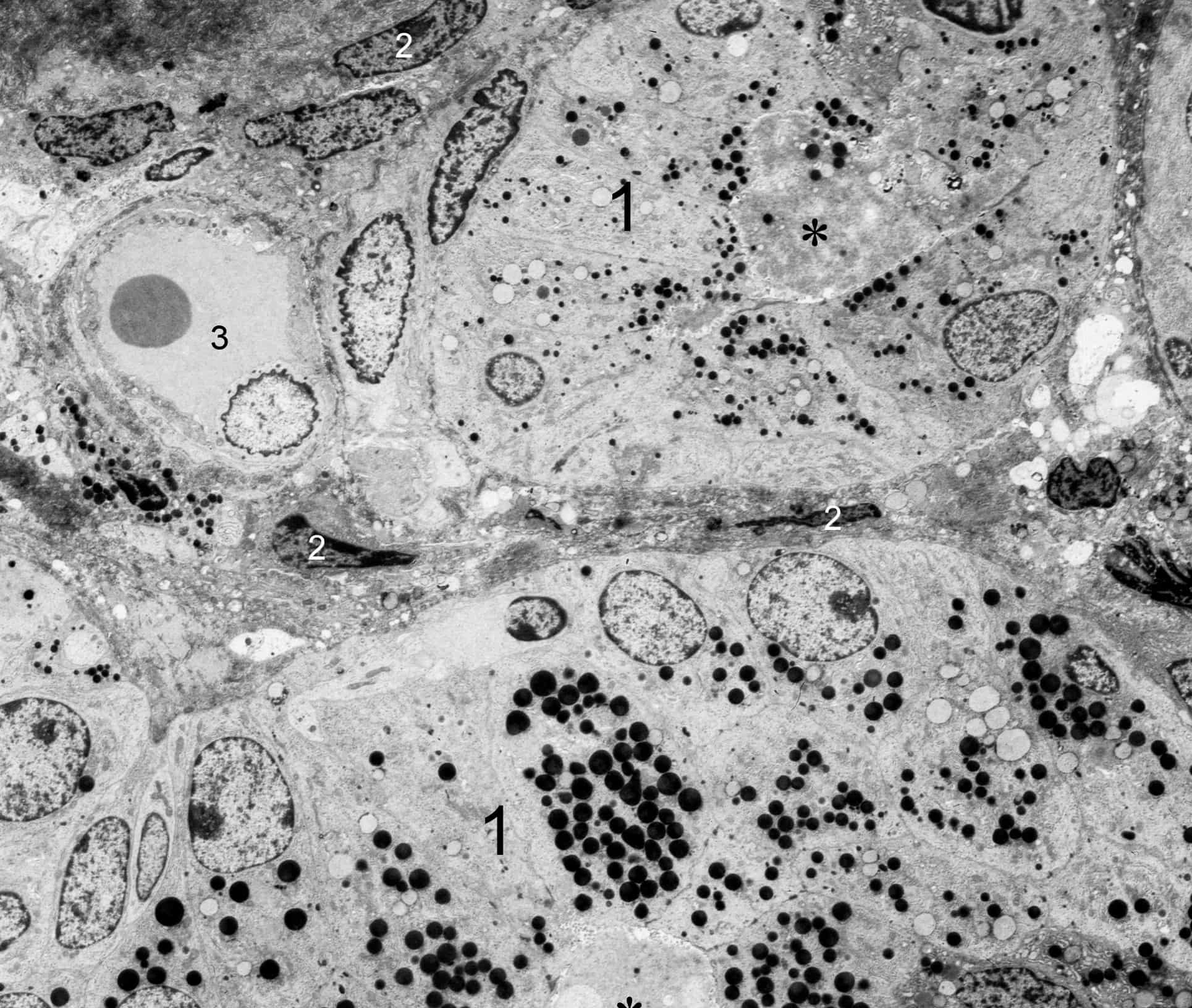
The human body is a fascinating and complex system, with numerous specialized organs and glands working together to ensure its proper functioning. One such intriguing gland is the Bowman’s gland, which many people may not be aware of. Bowman’s glands are found in the nasal cavity and play an integral role in maintaining the health of our respiratory system. These small, tubular glands produce a mucus-like substance that helps to keep the nasal passages moist and trap foreign particles, preventing them from entering the lungs. While Bowman’s glands may not be as well-known as some other glands in the body, they certainly have their own share of surprising facts. In this article, we will delve into 9 fascinating and unexpected facts about Bowman’s glands that will surely broaden your understanding of this crucial component of our anatomy. So let’s dive in and uncover some intriguing insights about Bowman’s glands!
Key Takeaways:
- Bowman’s Glands help us smell by producing mucus that carries odor molecules to our nose’s smell detectors. They were named after Sir William Bowman, who discovered them in the 19th century.
- Bowman’s Glands are like superheroes for our noses, protecting us from germs and helping us smell. They can even help scientists create better ways to deliver medicine through our noses!
Bowman’s Glands are named after their discoverer, Sir William Bowman.
Bowman’s glands, also known as olfactory glands, were first identified and named by Sir William Bowman, an English physician and anatomist, in the mid-19th century.
Bowman’s Glands are found in the nasal mucosa.
These glands are located in the nasal mucosa, which lines the inside of the nasal cavity. They are responsible for producing mucus, a viscous substance that helps trap foreign particles and pathogens to protect the respiratory system.
Bowman’s Glands play a crucial role in the sense of smell.
These glands secrete mucus onto the olfactory epithelium, which contains specialized receptor cells responsible for detecting odors. The mucus helps dissolve and transport odor molecules to the receptor cells, allowing us to perceive different smells.
Bowman’s Glands are serous glands.
The secretions of Bowman’s glands are mainly composed of water, electrolytes, and proteins. This serous fluid helps lubricate the nasal passage and maintain its moisture level, enhancing the efficiency of the olfactory system.
Bowman’s Glands can be affected by certain diseases and conditions.
Infections, allergies, and nasal irritants can stimulate the production of excess mucus from Bowman’s glands, leading to a runny or congested nose. Conversely, certain medical conditions, such as Sjögren’s syndrome, can result in decreased glandular function and reduced mucus production.
Bowman’s Glands can regenerate and repair themselves.
In the event of injury or damage to the nasal mucosa, Bowman’s glands have the ability to regenerate and repair themselves. This regenerative capacity helps restore the normal functioning of the olfactory system.
Bowman’s Glands are more abundant in certain animals.
While humans have a moderate number of Bowman’s glands, some animals, such as dogs and rodents, have a much higher density of these glands. This increased glandular presence contributes to their superior sense of smell compared to humans.
Bowman’s Glands can be affected by aging.
As we age, the number and functionality of Bowman’s glands can decline. This can result in a decrease in the production of mucus, potentially affecting the sense of smell and the overall health of the nasal passages.
Bowman’s Glands have implications in the development of nasal drug delivery systems.
Scientists are exploring the use of Bowman’s glands to develop more effective nasal drug delivery systems. By utilizing the glands’ unique secretory properties, medications can be delivered directly to the olfactory epithelium, potentially enhancing drug absorption and improving therapeutic outcomes.
Conclusion
In conclusion, Bowman’s glands are an important component of the human anatomy with a range of functions. These small glands, found in the nose, have the remarkable ability to produce mucus, which helps to protect the nasal passages from various external threats and aids in the process of olfaction. They are responsible for maintaining the delicate balance of moisture and hydration in the nasal cavity, ensuring optimal nasal function.Despite their size, Bowman’s glands play a significant role in our overall health and well-being. From filtering out contaminants to facilitating the sense of smell, these glands contribute to our daily experiences in ways that may often go unnoticed.Understanding the fascinating facts about Bowman’s glands not only enhances our knowledge of human anatomy but also deepens our appreciation for the intricate workings of our bodies. Whether it is the impact of certain medications or their role in protecting the nasal passages, these glands continue to perplex and astound researchers and medical professionals alike.By delving into the surprising facts about Bowman’s glands, we can gain a better understanding of the complexities of human anatomy and appreciate the remarkable abilities of even the tiniest glands in our bodies.
FAQs
Q: What are Bowman’s glands?
A: Bowman’s glands are small mucus-secreting glands located in the nasal cavity.
Q: What is the function of Bowman’s glands?
A: The primary function of Bowman’s glands is to produce mucus, which helps to moisturize and protect the nasal passages.
Q: Can Bowman’s glands be affected by certain medical conditions?
A: Yes, certain medical conditions such as chronic rhinosinusitis can impact the function and health of Bowman’s glands.
Q: Are there any treatments available for Bowman’s gland-related conditions?
A: Yes, depending on the specific condition, treatments such as nasal irrigation, medications, or surgery may be recommended to manage Bowman’s gland-related issues.
Q: Do Bowman’s glands play a role in the sense of smell?
A: While Bowman’s glands themselves do not directly contribute to the sense of smell, they create an environment in the nasal cavity that is conducive to olfaction.
Q: Can Bowman’s glands be damaged by excessive use of nasal sprays?
A: Prolonged and excessive use of certain nasal sprays may lead to damage or irritation of Bowman’s glands.
Q: Can the production of mucus by Bowman’s glands be affected by external factors?
A: Yes, factors such as environmental pollutants, allergens, and dry air can impact the production of mucus by Bowman’s glands.
Q: Do Bowman’s glands have any known role in the immune system?
A: While their primary function is related to moisturizing and protecting the nasal passages, Bowman’s glands may also contribute to the immune response in the nasal cavity.
Q: Can Bowman’s glands be found in animals?
A: Bowman’s glands are primarily found in humans, but similar structures exist in certain animals as well.
Bowman's glands, nestled within nasal cavities, play a fascinating role in our sense of smell. Unraveling mysteries behind these tiny structures is just the beginning; dive deeper into olfactory system facts, which work hand-in-hand with Bowman's glands. Explore intriguing aspects of respiratory system facts, a complex network that keeps us breathing. For an even closer look, delve into enigmatic details of olfactory epithelium facts, where scent reception begins. Embark on a journey through these interconnected wonders of human anatomy and physiology.
Was this page helpful?
Our commitment to delivering trustworthy and engaging content is at the heart of what we do. Each fact on our site is contributed by real users like you, bringing a wealth of diverse insights and information. To ensure the highest standards of accuracy and reliability, our dedicated editors meticulously review each submission. This process guarantees that the facts we share are not only fascinating but also credible. Trust in our commitment to quality and authenticity as you explore and learn with us.


